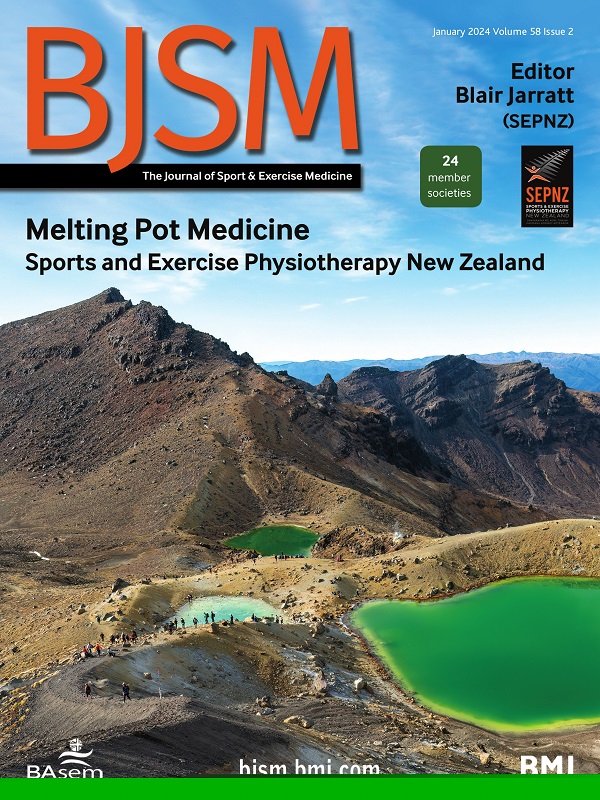通过虚拟现实实现可持续健身:我如何利用虚拟现实帮助我养成更健康的生活方式
IF 11.6
1区 医学
Q1 SPORT SCIENCES
引用次数: 0
摘要
作为一名接受放射学培训第四年的初级医生,工作在我的生活中扮演着巨大的角色——一天中似乎永远没有足够的时间来完成所有的任务。在很长一段时间里,我靠烤披萨维生,经常不锻炼,缺乏时间、精力和动力——或者经常三者兼而有之。在四年的专业训练中,我陷入了一种日常生活,从事体育活动是一种奢侈,这导致我变得不健康,随后体重增加了近10公斤。我知道我并不孤单自2019冠状病毒病疫情以来,全世界有20%的成年人和80%的青少年缺乏身体活动,尽管人们普遍知道身体活动带来的好处这一点尤其令人担忧,因为我们的许多终身习惯都是在青年时期形成的,这些习惯在以后变得越来越难以改变缺乏运动的原因有很多,包括社会影响、价值观、对体育活动的消极态度然而,一个主要因素是缺乏动力,因为体育活动被认为是无聊和辛苦的工作因此,在过去的50年里,像我这样的年轻人超重或肥胖的比率一直在稳步上升像83%的美国和其他西方国家的工人一样,我的工作就是坐在电脑前,几乎不需要体育锻炼这种久坐不动的生活方式会增加患心血管疾病和其他健康问题的风险此外,人们在漫长的一天工作后不太可能从事体育活动,这使问题进一步复杂化为了证明……本文章由计算机程序翻译,如有差异,请以英文原文为准。
Sustainable fitness through virtual reality: how my use of virtual reality helped lead to a healthier lifestyle
As a junior doctor in my fourth year of radiology training, work plays an outsized role in my life—and there never seem to be enough hours in the day to complete all my tasks. For a long time, I survived on oven pizza and regularly skipped exercise, lacking the time, energy, motivation—or often all three. Over 4 years of specialisation, I had fallen into a routine where engaging in physical activity was a luxury, leading to my becoming unfit and, subsequently gaining nearly 10 kg. I know I’m not alone in this struggle.1 Since COVID-19 20% of adults and 80% of adolescents worldwide are reported to be physically inactive, despite the widely known benefits that physical activity brings.2 This is especially concerning given that young adulthood is when many of our lifelong habits are formed, with these habits becoming increasingly difficult to change later on.1 The reasons for this lack of activity are numerous, including social influences, values, negative attitudes towards physical activity.2 However, one major factor is simply a lack of motivation due to physical activity being seen as boring and hard work.2 Subsequently, rates of being overweight or obese among young adults like myself have been rising steadily over the past 50 years.1 Like 83% of workers in the USA and many in other Western countries, my job involves sitting in front of a computer with little need for physical activity.3 This sedentary lifestyle is associated with a higher risk of cardiovascular disease, among other health problems.4 Furthermore, people are less likely to engage in physical activity after a long day of work, further compounding the problem.2 To justify …
求助全文
通过发布文献求助,成功后即可免费获取论文全文。
去求助
来源期刊
CiteScore
27.10
自引率
4.90%
发文量
217
审稿时长
3-8 weeks
期刊介绍:
The British Journal of Sports Medicine (BJSM) is a dynamic platform that presents groundbreaking research, thought-provoking reviews, and meaningful discussions on sport and exercise medicine. Our focus encompasses various clinically-relevant aspects such as physiotherapy, physical therapy, and rehabilitation. With an aim to foster innovation, education, and knowledge translation, we strive to bridge the gap between research and practical implementation in the field. Our multi-media approach, including web, print, video, and audio resources, along with our active presence on social media, connects a global community of healthcare professionals dedicated to treating active individuals.

 求助内容:
求助内容: 应助结果提醒方式:
应助结果提醒方式:


